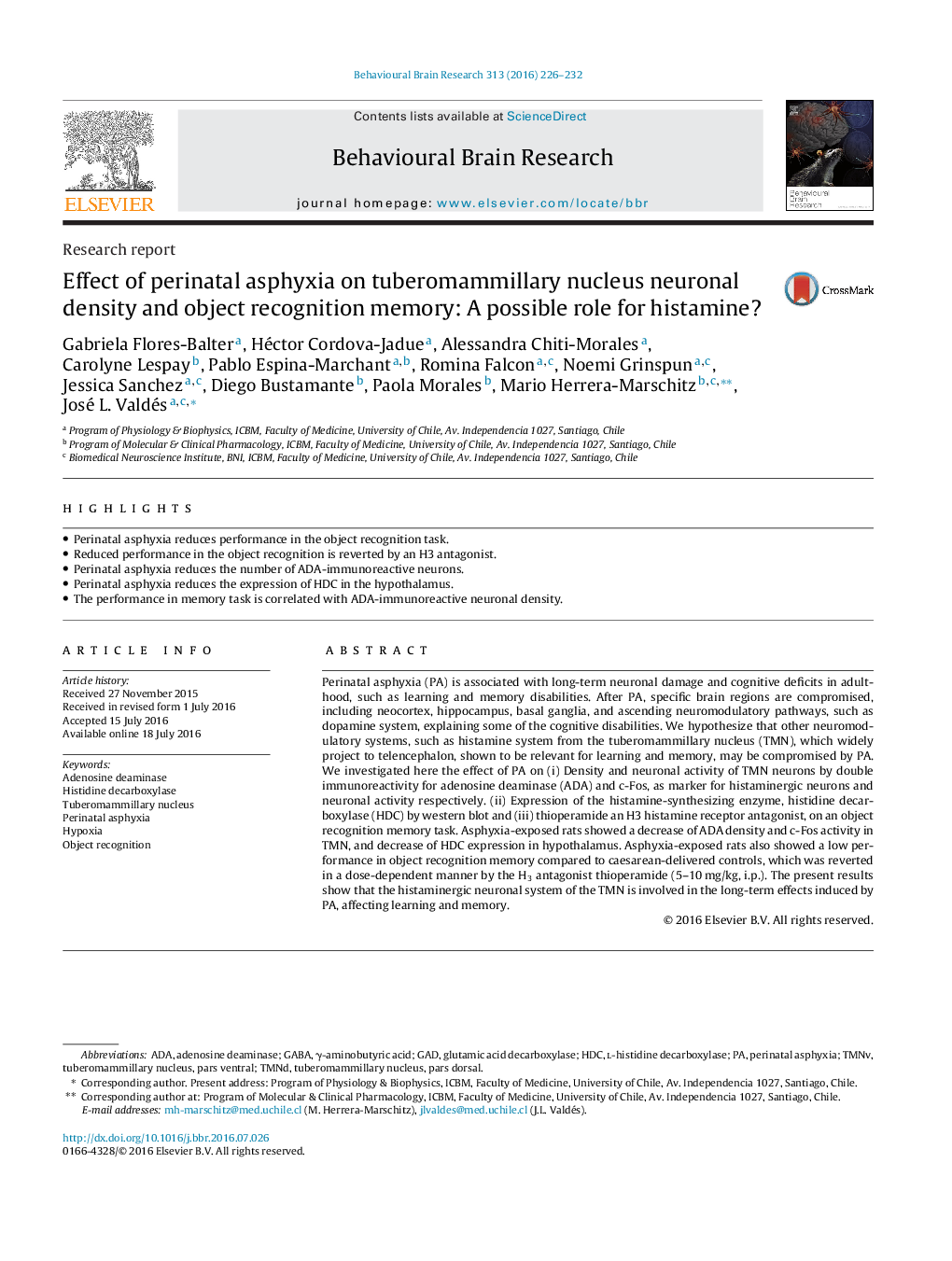| کد مقاله | کد نشریه | سال انتشار | مقاله انگلیسی | نسخه تمام متن |
|---|---|---|---|---|
| 6255834 | 1612920 | 2016 | 7 صفحه PDF | دانلود رایگان |
- Perinatal asphyxia reduces performance in the object recognition task.
- Reduced performance in the object recognition is reverted by an H3 antagonist.
- Perinatal asphyxia reduces the number of ADA-immunoreactive neurons.
- Perinatal asphyxia reduces the expression of HDC in the hypothalamus.
- The performance in memory task is correlated with ADA-immunoreactive neuronal density.
Perinatal asphyxia (PA) is associated with long-term neuronal damage and cognitive deficits in adulthood, such as learning and memory disabilities. After PA, specific brain regions are compromised, including neocortex, hippocampus, basal ganglia, and ascending neuromodulatory pathways, such as dopamine system, explaining some of the cognitive disabilities. We hypothesize that other neuromodulatory systems, such as histamine system from the tuberomammillary nucleus (TMN), which widely project to telencephalon, shown to be relevant for learning and memory, may be compromised by PA. We investigated here the effect of PA on (i) Density and neuronal activity of TMN neurons by double immunoreactivity for adenosine deaminase (ADA) and c-Fos, as marker for histaminergic neurons and neuronal activity respectively. (ii) Expression of the histamine-synthesizing enzyme, histidine decarboxylase (HDC) by western blot and (iii) thioperamide an H3 histamine receptor antagonist, on an object recognition memory task. Asphyxia-exposed rats showed a decrease of ADA density and c-Fos activity in TMN, and decrease of HDC expression in hypothalamus. Asphyxia-exposed rats also showed a low performance in object recognition memory compared to caesarean-delivered controls, which was reverted in a dose-dependent manner by the H3 antagonist thioperamide (5-10Â mg/kg, i.p.). The present results show that the histaminergic neuronal system of the TMN is involved in the long-term effects induced by PA, affecting learning and memory.
Journal: Behavioural Brain Research - Volume 313, 15 October 2016, Pages 226-232
